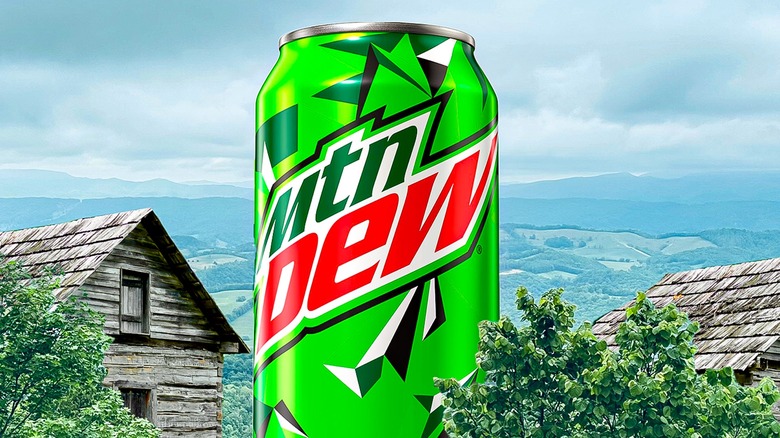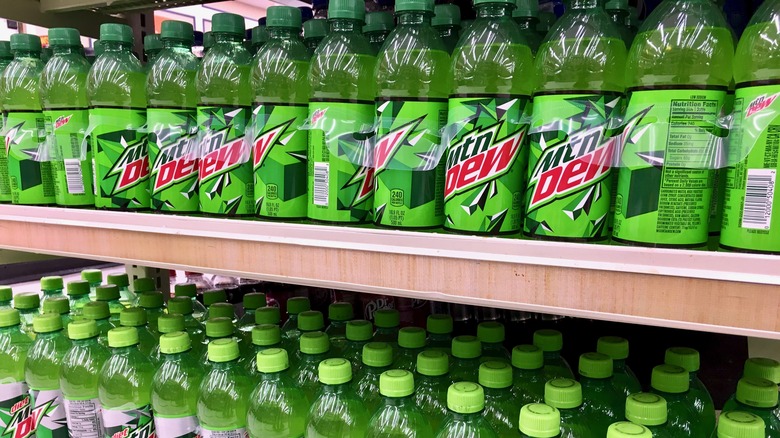Why Mountain Dew Is So Beloved In Appalachia
Mountain Dew, the soft drink born in the mountains of Tennessee in 1927, has seen a long and bumpy road to becoming the fifth most popular soda in the U.S. Before the creation of this electric green, high-caffeine citrus soda, "mountain dew" was better known as another name for moonshine, the illegal, high-potency corn whiskey. And like moonshine, this soda has deep ties to Appalachia, specifically Southern Appalachia, which encompasses parts of Maryland, West Virginia, Virginia, Kentucky,Tennessee, and North Carolina.
Before Pepsi bought the soda in 1964 and launched it nationally, Mountain Dew was a regional favorite with advertisements that played up its Appalachian roots and ties to moonshine. The company's mascot was "Willy the Hillbilly" and the label included a blurb touting its "flavors specially blended in the traditional hillbilly style." Even today, Mountain Dew is beloved in Appalachia, so much so that some public health experts believe it's negatively impacting the region's health and coined the term "Mountain Dew mouth" to describe tooth decay from drinking too much of the soda.
Mountain Dew's Appalachian roots
In the late 1920s, a Knoxville, Tennessee, entrepreneur named Max Licht began selling a new drink he playfully named Mountain Dew after the illegal whiskey. Like moonshine, his soda was clear, but unlike its namesake it was non-alcoholic. This was a time when soft drinks were rising in popularity as an alternative to alcohol and were often touted as being medicinal. For instance, Pepsi, which is named after indigestion, was created by a pharmacist to help calm upset stomachs. Licht's Mountain Dew quickly faded away but was revived in the 1940s — also in Knoxville.
Brothers Barney and Ally Hartman, who were bottlers, created their version as a mixer for moonshine for their own use. In 1947, the brothers began selling it to the general public. Like the 1920s version, it was a clear and caffeine-free citrus soda similar to 7-Up. It wasn't until the 1950s when the Hartman Beverage Company and a group of other bottlers bought the Tip Corporation located in Marion Virginia and began labeling another citrus-flavored soda as Mountain Dew that the drink became the electric green and highly caffeinated soda (containing 55 milligrams of caffeine) we know today. Through all its ups and downs, Mountain Dew has remained an Appalachian favorite. "Here in West Virginia, you see people carrying around bottles of Mountain Dew all the time — even at a public health conference," health researcher Dana Singer told NPR in 2013.

